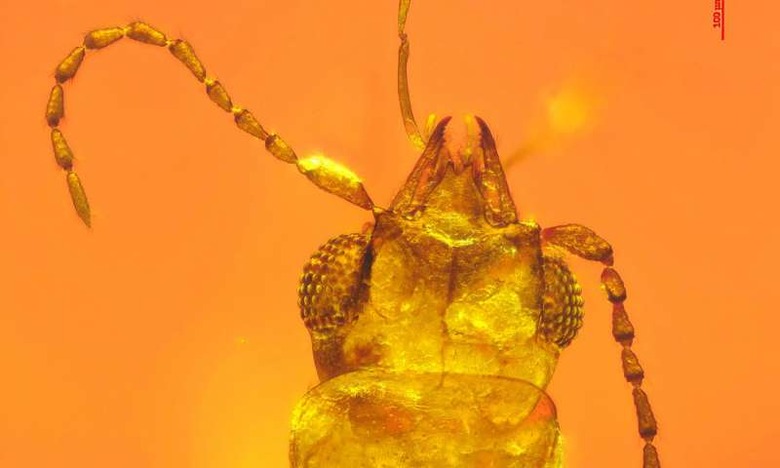Beetle In 99-Million-Year-Old Amber Found With Ancient Cycad Pollen
Cycads, a type of seed plant with evergreen leaves and a woody trunk, are highly present in the fossil record, which reveals that they were once more abundant on Earth than they are today. According to a study newly published in Current Biology, the earliest cycads were pollinated by a lowly beetle, that discovery having been made from a small piece of amber.
A chunk of amber featuring a bettle was presented by Diying Huang at the Chinese Academy of Sciences to Chenyang Cai, who is currently a fellow at the University of Bristol. Cai noticed cavities in the mandibles of the beetle trapped within the amber, suspecting they may have been used to carry cycad pollen, making the ancient beetle species a cycad pollinator.

That suspicion spurred research into the matter, during which time Cai brought in another researcher at the Chinese Academy of Sciences, Liqin Li, who is an ancient pollen expert. Li analyzed pollen grains from the amber first spotted by Cai, confirming that it had come from a cycad.
In addition to identifying the pollen, the researchers analyzed the beetle itself, linking it to a sister group to Australian Paracucujus, which is a modern cycad pollinator. The findings, according to the study, indicate that these Boganiidae beetles were ancient cycad pollinators, making cycads potentially the first plants that were pollinated by insects.
SOURCE: Phys.org
